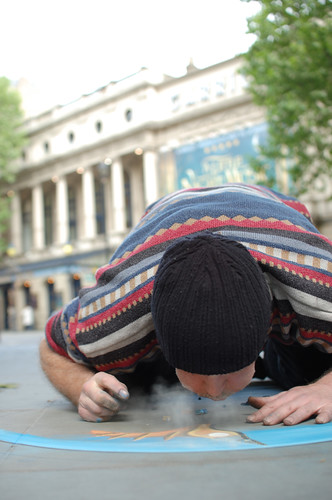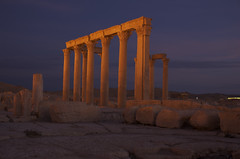Yesterday, I meet with a large number of photographers for an afternoon dedicated to the street. I attended a workshop on street photography. Inevitably, in these parts of the world, we met in a pub. Gary Alexander, a professional photographer specializing in street and urban photography, gave an hour-long introductory talk, not so much sharing secrets and tricks of the trade but rather spreading enthusiasm. He ran through much of the history of this genre, showing plenty of photographs taken by some of the great players in the game and letting the audience draw their own conclusions.
Also included in his presentation were short clips cut from documentaries on those photographers. It was interesting to hear their views but infinitely more edifying to see them work. One question the novice has is how to get close to your subjects without getting into trouble. The most radical answer was provided by Bruce Gilden who just walks up to whoever tickles his interest, sticks his camera in that person's face and fires – the shutter and the flash. Most of the time, his subjects are too shocked to react, frozen like deer in the headlights, and he walks off unperturbed. I wasn't quite sure I could be this bold, but to find out I had to get out and give it a try.
Much to my amazement, out on the street is when the fun really started. I kept my camera close to my face and my finger on the shutter release. "Take lots of pictures", was one of the few concrete hints Gary had given us. As prime example for that philosophy he had mentioned Garry Winogrand who left behind more than 300,000 (that's three hundred thousand for those not good with counting zeros) unedited images and more than 2500 unprocessed rolls of film when he died. Street photography is about capturing the magic of the moment. The more moments you immortalize, the higher your chances of capturing something magic. I absorbed this advice and by the end of two hours on the street, I had taken more than 150 photos. This is a lot for me, more than one per minute, and I was exhausted – but I had had a great time.
It all started in my head. I was determined to let go of my usual inhibitions and be a true street photographer for a few hours. So from the beginning, I stuck my camera into people's faces, sometimes getting so close that I was afraid they would collide with my lens. At some point I even took the lens hood off, just to be on the safe side. During the first ten shots or so, I was very self-conscious. I would take sneak up on someone, take a picture and then, while walking away and with much trepidation, check their reaction out of the corner of my eye. One head-scarfed lady tossed me a mean look early on but by everyone else I was ignored – so much that I soon found myself eerily detached from my subjects.
I was reminded a little of zoology lab in college. When I looked at the frog in front of me, I saw an animal I was familiar with, a creature I wouldn't hurt or endanger gratuitously. As I put my eye to the microscope and, very hesitantly, almost despite myself, my scalpel to its dimpled green skin, the animal was transformed into a subject of study and I filled with the rush of discovery as I cut through layers of dermis and revealed the details of the nervous system and bone structure.
My eye on the viewfinder, I felt similarly scientific wandering the streets of London. Driven by the desire to uncover the city as I hadn't seen it before, I wasn't fearful of people's reactions. And guess what? I got some great shots, some of which I put into a set on flickr. The one below, of a street artists putting some love into his chalk drawing, is easily the best I've taken since I got my SLR fifteen months ago.
I saw this man near the National Portrait Gallery. He was on his knees, hunched over the pavement, handling his chalk. I felt it would make a good picture but I had to get down to him. While I dropped my camera, finger on shutter release but eyes nowhere near the viewfinder, he bend down himself, to blow some loose chalk from his creation. I took the picture guided by nothing but luck and captured the precise moment. Look at the chalk dust!
For the most part, though, I took headshots of pedestrians around me, mostly tourists and shoppers. While it was easy to get carried away in the rush of excitement, towards the end of the two hours, after getting my umpteenth technically sound portrait of a person caught unawares, I was tiring a bit of the repetition. This is the point where it really gets interesting, I guess, the point where you take it to the next level and make it your own. You evolve away from plain heads and develop a style or narrative that's your own. That's something I'm really excited about trying.


1 comment:
i found some of your pictures! they're excellent! now that i've spent hours reading and looking at your blog, i should go to bed and get some sleep! stacy
Post a Comment